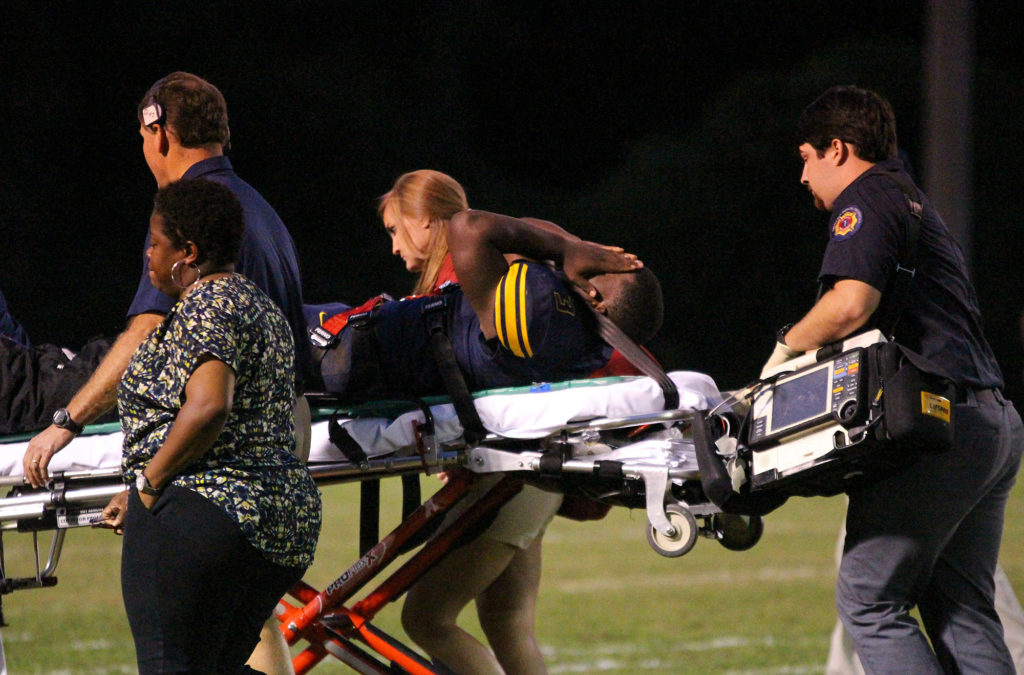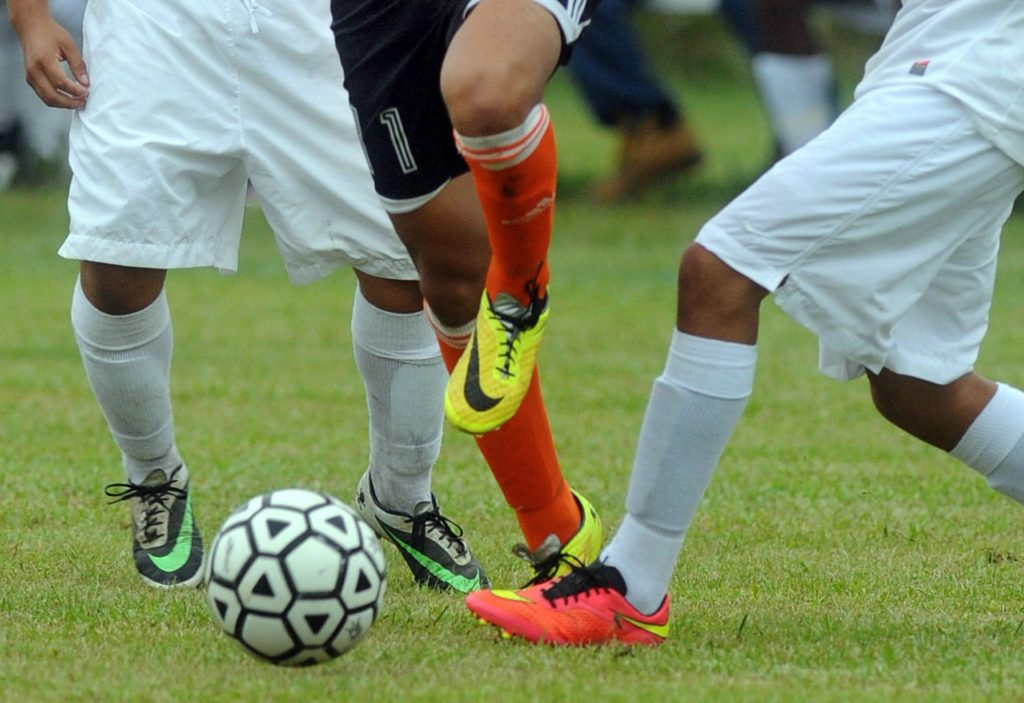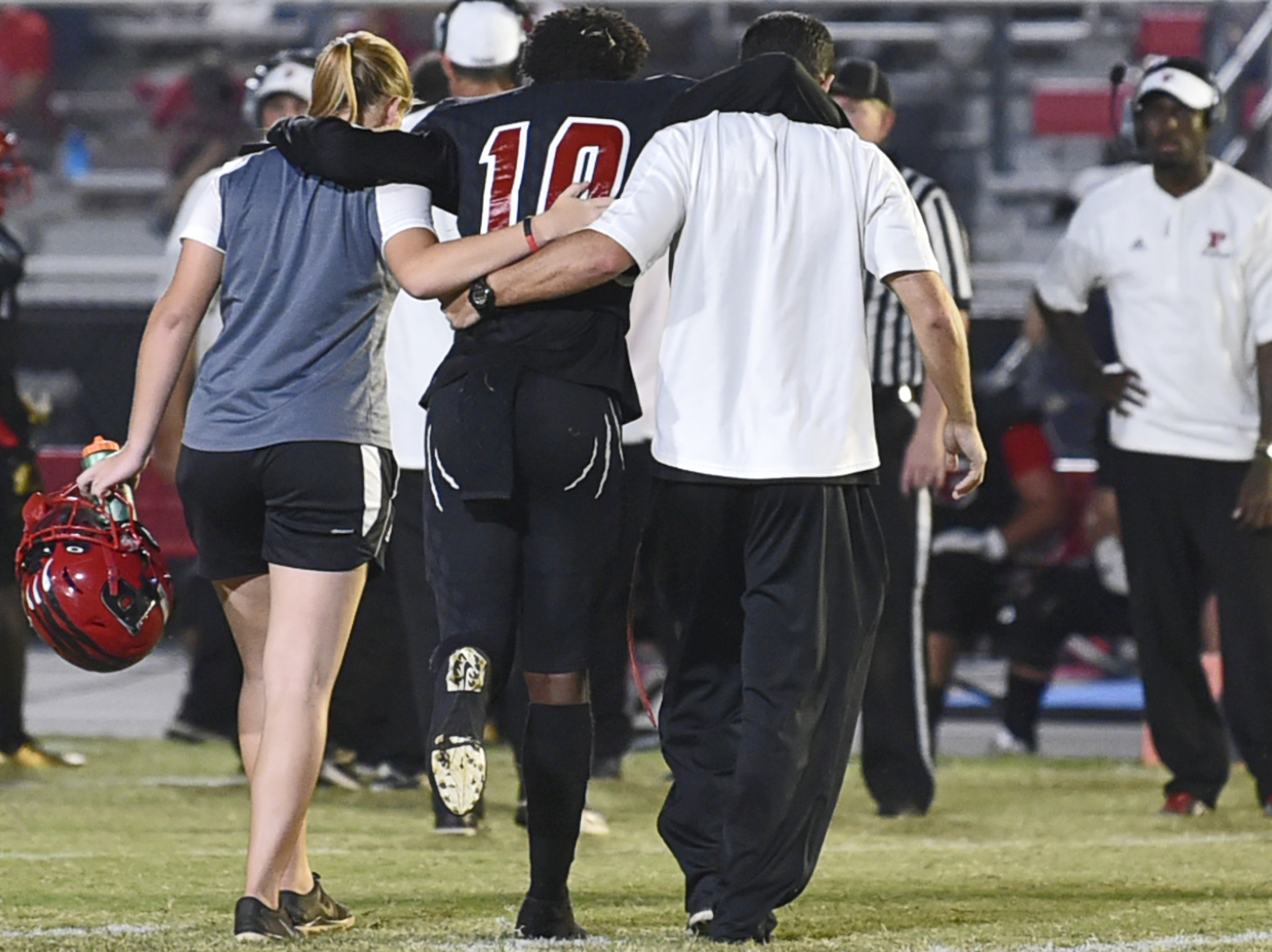Youth sports injuries — especially football — spike every September

Every year, the final weeks of August are the “last reprieve” for Dr. Neeru Jayanthi, an Atlanta-based sports medicine physician.
That’s because as students head back to school and resume sports, the injuries start rolling in.
“We actually prepare for it as high schools and contact sports start opening up,” said Jayanthi, who runs Emory Healthcare’s sports medicine research and education division. “With the clinics, we already expect to see more volume.”
More children go to the emergency room for sports-related injuries in September than at any other time of the year, according to an analysis of two decades of hospital data by GateHouse Media.
Football alone accounts for more than half of all sports-related visits in September for patients under 18. ER trips due to soccer and basketball injuries also peak that month.
The data comes from the National Electronic Injury Surveillance System, a database run by the U.S. Consumer Product Safety Commission for more than four decades. Around 100 hospitals around the country participate, sending detailed data about every ER visit associated with a consumer product to the commission.
Not all sports injuries peak in the fall. Wrestling-related and basketball-related ER visits are at their highest in January. Meanwhile, softball and baseball-related ER visits tend to spike in May.
Sports medicine experts say athletes often get injured at the beginning of the season because they tend to jump right back into intense training even though their bodies aren’t conditioned for it.

That’s a pattern that has been noticed even at the most elite levels of play, like in the National Football League, where officials are weighing whether to shorten the preseason due to the prevalence of injuries.
Many youth sports have actually lost participation in recent years, according to the Sports & Fitness Industry Association. Not only are parents are more aware than ever about the risk of injury, but kids are also balking at a culture that is too high-pressure and focused on achievement instead of fun and exercise, said Jayanthi.
“It’s great for kids to really want intensity, but there’s a cost to that as well,” he said.
Charelle Tootle, a mother of two from Kansas City, said her teenage son Parker withdrew from football due to just those concerns.
He sustained a severe concussion in 2014 while trying to eke out a few more yards on a first down in a JV game, right before he was set to start as his high school’s varsity quarterback. The teenager missed school for months as doctors ordered him to stay away from watching TV or even listening to music — anything that could overstimulate his brain, said Tootle.
In the end, the arduous recovery process and the fear of permanent damage were too much to endure — even for their football-obsessed family.
“What my son went through, it’s not worth it,” Tootle said. “When your child is laying on the field, knocked out, there’s nothing scarier. And looking back, I would say no to football.”
Football does tend to have high concussion rates, according to Safe Kids Worldwide, which used the same ER data to examine injury rates by sport in 2013. Other activities like ice hockey and wrestling had even higher concussion rates.
Still, “every sport is safe if the right things are followed,” said Safe Kids’ sports safety program manager Ali Flury. “You do your pre-participation physical, you do your warmup and stretch routine every single day, you drink water, you wear the appropriate equipment.”
According to the database, ER visits for football-related injuries for older kids peaked in 2010 before dropping dramatically. In 2010, the database counted 12,064 football-related injuries. In 2018, hospitals recorded just 7,713. And a higher percentage of those injuries are concussion-related.
Emergency room physicians say they are encouraged to see more young athletes coming in with questions about concussions and overuse injuries.
Dr. Annie Slater, a pediatric emergency medicine physician in Seattle, emphasized making sure that kids take appropriate time off if they are injured.
When you sprain an ankle, your tendons and soft tissue are weakened, she said. That means you’re more at risk for hurting yourself if you return to play without healing properly.
“I see kids come in and they just want to play their sport and they just want to get back on the field, but my biggest thing is you have to rest,” Slater said.
Parents also need to think critically about how many sports they want their child participating in competitively, said Dr. Irene Tien, a Boston-area pediatric emergency room physician.
“Bodies do need a rest,” Tien said. “It is actually productive to rest.”

Jayanthi, who himself is a lifelong tennis player, encourages parents to allow their children to be self-directed when selecting which sports to participate in and how intense to be.
Instead of focusing solely on safety, parents should consider other factors like psychosocial benefits and exercise benefits, he said. For example, while football may score lower on physical safety, it’s among the sports that ranks the highest in psychosocial benefits.
“I want to remind people that sports is a great, great avenue for young folks and young people,” Jayanthi said. “Let’s not look at the data and say move away from sports — because now you have kids playing Fortnite.”